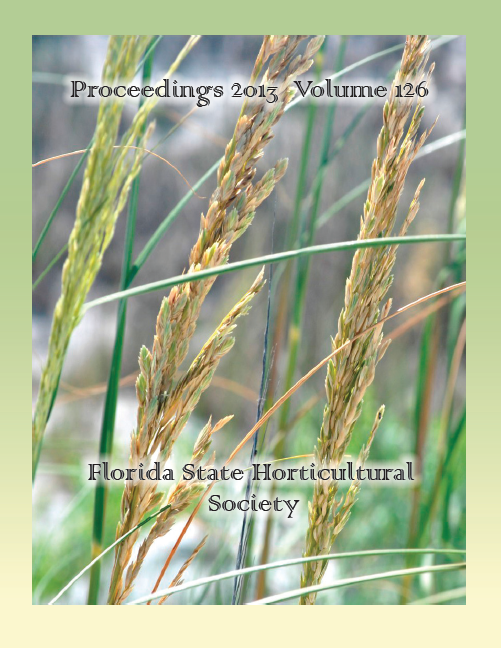Published 2013-12-01
Keywords
- drainage water quality,
- phosphorus load,
- particulate phosphorus,
- floating aquatic vegetation,
- Everglades Forever Act
- Histosol ...More
Abstract
Elevated phosphorus (P) in water deliveries sourced from urban and agricultural sectors has been linked to undesirable ecosystem imbalances in the Florida Everglades. With respect to agriculture, the Everglades Forever Act (1994) requires annual P levels in Everglades Agricultural Area (EAA) surface run-off be reduced by at least 25% relative to historic trends. To achieve this regional regulatory target, in 1995 EAA farmers were required to implement farm-drainage Preduction best management practices (BMPs), pay an annual agricultural privilege tax to support Everglades restoration initiatives, and bear the cost of monitoring their farm drainage water quality. Early development/testing of farm-level BMP strategies by University of Florida/Institute of Food and Agricultural Sciences (UF/IFAS)confirmed that significant drainage P-load reductions were feasible for a variety of cropping systems. These early BMP technologies focused on nutrient control and water management strategies. In the late-1990s, a second phase of BMP development focused on disproportionally high (up to 60%) P-load contributions from both suspended particulate and canal sediment sources entrained in farm drainage streams. Current UF/IFAS research is focusing on floating aquatic vegetation controls to further enhance P-reduction BMP technologies. Bi-annual grower-oriented BMP workshops present the latest BMP recommendations to EAA farmers and water regulators. This innovative farm-level BMP program has successfully mitigated regional P loading trends. Since 1996, the EAA has annually complied with the minimum 25% P-reduction requirement (averaging a 55% reduction), achieved a 41% reduction (109 metric tons of P) in 2013, and over the life of the program has prevented 2,673 metric tons of P from entering the Everglades Protection Area.

